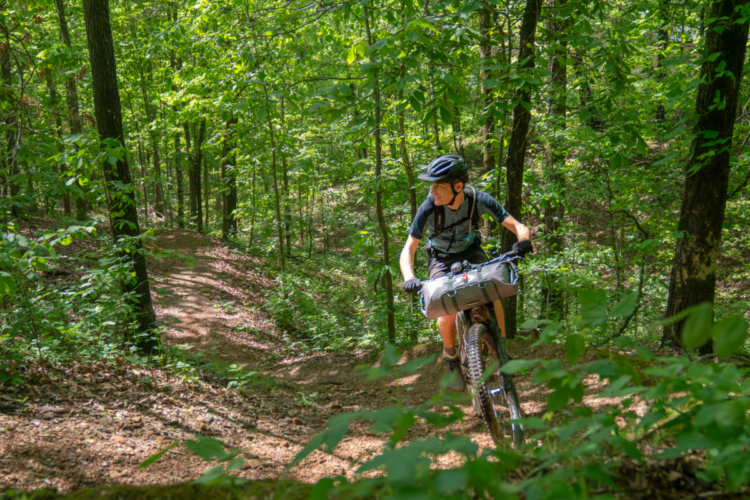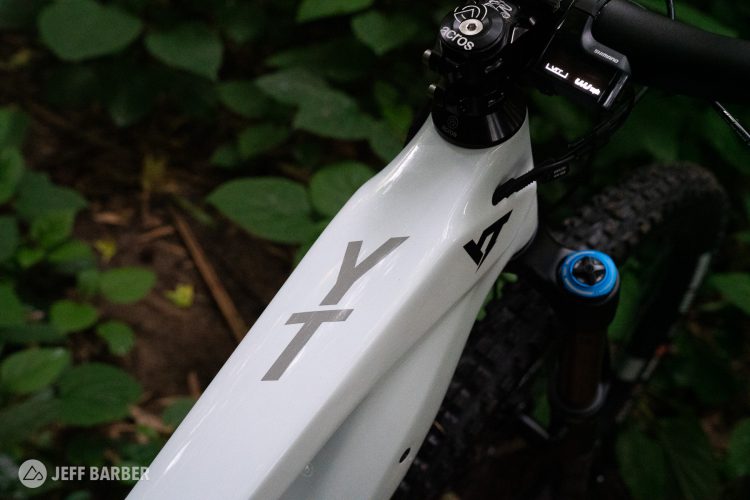
If it’s not one problem, it’s another. Supply chains have been steady as a cowboy’s coffee cup on horseback since the pandemic started, evolving from one problem into the next. Three years ago, as governments imposed lockdowns, more people took to the bicycle to escape their homes and explore their neighborhoods. Supply at bike retailers evaporated and bikes became harder to get than toilet paper, inducing price increases and a heavy demand that manufacturers struggled to meet.
Retailers put consumers on lengthy waiting lists, took deposits, and gave buyers vague ideas about when their bike would actually show up. Sometimes frame manufacturing was halted because of reappearing lockdowns in Asia, or the frames were ready, but components from SRAM or Shimano were not.
When we checked in with a handful of bike shops a year ago, most were in the same boat. They were waiting for brands to fulfill big backorders, many of which were taken during the height and heat of the pandemic. Many of those backorders lost the customers waiting for them at their local bike shop, whether it was because buyers found another one or lost interest in biking altogether. Shops we spoke with reported being stuck with their original orders because brands wouldn’t let them alter the request.
Bike retail and supply in the post-pandemic world
We’ll call the next stage of the pandemic and supply chain fiasco, “lots of bikes, with no one to ride them.” In the fall of 2022, we started seeing enormous sales from bike brands. In October, Specialized used “We made too many” as a catchphrase for a 25% off sale. Discounts like these started to spread to other brands and retailers lowered their prices too. Of course, the dead of winter is not a great time for retailers or direct-to-consumer brands to sell bikes, factoring in to the plethora of discounts lately.
“All of the sudden, [bike retailers] get giant pallets in the beginning of the year and the hardest season to sell,” Cameron Simpson told us, the (former) Head of North America for BikeExchange, an online platform that allows dealers across the U.S. to sell bikes on their website. Retailers expand their consumer base from regional to national and consumers expand their horizons and see a wide availability of bikes. Unfortunately between the time we spoke for this story and publishing, Simpson was laid off.
Simpson said she believes the supply chain kinks straightened when component availability increased in late 2022. Since then, they’ve had an influx of retailers listing excess bikes on BikeExchange, looking for more avenues to sell.
Pricing has been a huge factor for brands and retailers over the course of the pandemic, with several brands raising their MSRP due to supply chain crunches and price inflation for goods and services. Now with bikes in abundance, brands have cut prices. BikeExchange, operating as an online marketplace and helping local bike retailers broaden their consumer base has been in a tricky middleman position. Simpson said lately they have been approached by bike brands who are frustrated that some of their models are selling below the minimum advertised pricing (MAP) agreement between the brand and retailers.
“Minimum advertised policy is a huge conversation,” said Simpson. MAP is set by bike brands and retailers are usually forbidden from pricing products below the bottom line.
“There are two thoughts from brands, which are; we want to control the pricing, we want to control the brand image,” she said. “And then the other thought from other brands is; we just want to support the retailers in selling through the product. And there is never a combination of that within a brand. It’s either one or the other.”
The idea around MAP is to keep retailers from undercutting each other and to “keep an even playing field for bike shops,” said Simpson, but “it is very much regulating the decision making from the bike shop level and keeping it at the brand level.”
A glimpse at the future of bike supply and retail
When the pandemic first squeezed supply lines, we heard that it will be a few years until flow stabilizes. At the consumer level, things feel mostly normal again, if not better than they were. There are plenty of new bikes at retailers again, massive discounts, and SRAM and Shimano are mostly in stock. Last fall, SRAM allowed retailers to deviate from MAP after seeing healthy levels of inventory again.
“Our goal is to create demand so that our retailers, partners, and we at SRAM are in the best position regarding inventory going into next spring season,” North American Field Guide Manager Chris Negrete of SRAM told Bicycle Retailer and Industry News.
Simpson believes it will still be a few years until things are fully normal again, though as the spring sales season approaches, dealers will likely offload some of the excess bikes. But she believes there will be an imbalance of the bikes that sit and the bikes that sell. Pandemic buyers who stuck with the sport are going to look for mid- to high-end bikes, and more entry-level bikes will sit. Simpson believes that supply chain complications will also steer more brands away from using model years, since so many have had to utilize whatever components are available to complete bike builds.
Retailers will also likely slim their bike sales space, she said, focusing on aftermarket component sales, post-sales service, and partnering with direct-to-consumer brands to complete bike builds for customers who’ve ordered a bike online. Trek and Specialized have both opened channels online for consumers to buy on their websites and have consumers pick them up from a dealer.
“The bike shop then at that point is getting a cut of the sale, they’re not having to purchase the bike, store the bike, warehouse the bike, or build it before it’s sold.” For brands who want to assure safety of their riders, having qualified technicians hand off a new bike is imperative too rather than assuming consumers can safely put their bike together. BikeExchange offers fully-assembled bike delivery through Kitzuma Cycling Logistics to ease concerns about assembly, though the courier suspended its service over the fall and winter after seeing a reduced demand for bike delivery. They plan to start delivery again in the spring.
As the nature of bike sales evolve, a lot of change is likely still on the horizon, including more big brand buyouts of local bike shops, and brand-owned shops. The end of the pandemic is hardly the end of change for retailers.
“There’s a close kind of desire to keep in the past with how the bike retail storefront works and it’s not doing anyone any favors,” said Simpson. “If you look at the stats of how many people are searching for bikes online, you’ll become acutely aware that the majority of bike shoppers are starting their research or purchase journey online.”








6 Comments
Apr 5, 2023
The issue is when stuff like this forces inevitable change more rapidly I feel it hurts the smaller businesses while the larger ones just come in and start buying everything up or merging gaining them more control and advantage.
It's unfortunate for many. I feel like the consumer will lose out over time because we will have fewer choices and basically have to buy what it marketed to us rather than what is best for us. This is essentially how the auto industry works.
An example of this is the big push to 29ers with fewer 27.5 options. Consumers want 27.5 bikes, especially shorter riders like myself.
Apr 6, 2023
Apr 5, 2023
Apr 4, 2023
Apr 5, 2023
Apr 4, 2023